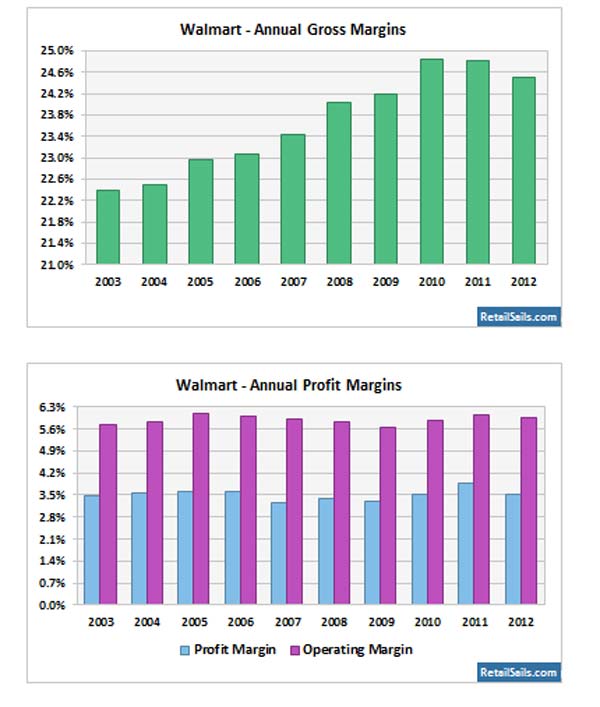Walmart, known for its operational efficiency was one of the first to use the small rfid (Radio Frequency Identification) chips drive large BUSINESS VALUE. Following is a summary of how it has benefited from RFID over the years.
Initially, Walmart used RFID to track its goods at various stages of the supply chain. This helped them defined and measure metrics to analyze how long does it take them to make a product available on the shelf once it has been purchased and stored in a warehouse. This also allowed them to see how quickly their inventory is moving physically. To make this more effective, Walmart collaborated with its suppliers and ensured that they adopt RFID too. This took the RFID initiative to a whole new level where information now being captured outside Walmart's own control.
Initially, Walmart used RFID to track its goods at various stages of the supply chain. This helped them defined and measure metrics to analyze how long does it take them to make a product available on the shelf once it has been purchased and stored in a warehouse. This also allowed them to see how quickly their inventory is moving physically. To make this more effective, Walmart collaborated with its suppliers and ensured that they adopt RFID too. This took the RFID initiative to a whole new level where information now being captured outside Walmart's own control.
By 2007, executives at Walmart were able to reduce their inventory levels and thereby improve the bottom line. As seen in the below graphic, Walmart annual gross margin improved dramatically after 2007.
Later in 2010, Walmart replaced the barcodes on garments with RFID. The fact that RFIDs can store more information than barcodes which can be used for real time analytics prompted this decision. An additional advantage was that they can be scanned by a distance and without a clear line of sight. This reduced the time to capture the information stored. This reduced lag in information helped the executives at Walmart make informed decisions quicker than before. A detailed explanation of the garment RFID process at Walmart is depicted in the below diagram. It also highlights a few of the privacy concerns with the use of this technology and how Walmart has worked around them.
In addition to Walmart, Harley-Davidson, Toyota and Las Vegas airport (baggage department) have also deployed RFID across their supply chains. Thus, it is reasonable to conclude that fast capture and analysis of supply chain information can generate great business value to organizations across all industries, irrespective of their size. But how large a company needs to be before investing in these technologies is a food for thought.



No comments:
Post a Comment
Note: Only a member of this blog may post a comment.